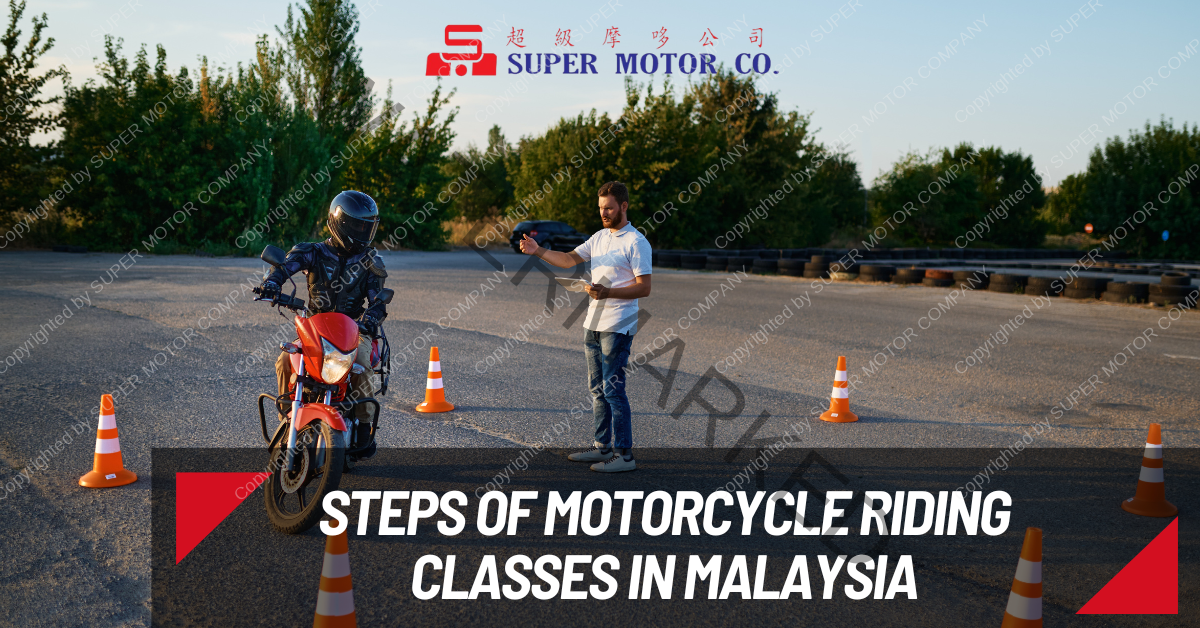In Malaysia, the allure of exploring scenic routes on a motorcycle is matched only by the necessity of mastering the art of safe riding. Motorcycle riding classes in the country offer a structured pathway for enthusiasts to hone their skills, ensuring not just personal enjoyment but also safety on the roads. From beginners to seasoned riders seeking to refine their techniques, these classes cater to riders of all levels. Let’s delve into the step-by-step journey of motorcycle riding classes in Malaysia.
![Steps_of_Motorcycle_Riding_Classes_in_Malaysia[1] Steps_of_Motorcycle_Riding_Classes_in_Malaysia](http://supermotor.com.my/wp-content/uploads/2024/03/Steps_of_Motorcycle_Riding_Classes_in_Malaysia1-300x254.png)
1. Choosing the Right Training Provider
The first crucial step on your journey to becoming a proficient motorcyclist is selecting a reputable training provider. Numerous institutions offer motorcycle riding classes in Malaysia approved by the Road Transport Department (JPJ). Prospective riders should research the credentials, reviews, and course offerings of various providers to ensure they receive quality instruction.
2. Enrolling in a Basic Riding Course
Upon selecting a training provider, aspiring riders typically enroll in a Basic Riding Course (BRC). This foundational program covers essential theoretical knowledge and practical skills necessary for safe motorcycle operation. From understanding road rules to mastering basic maneuvers like starting, stopping, and turning, the BRC forms the cornerstone of a rider’s education.
3. Classroom Instruction
Classroom sessions are an integral component of motorcycle riding classes. Here, students learn about traffic regulations, road signs, and defensive riding techniques. Instructors impart valuable insights into risk awareness, hazard perception, and the importance of protective gear. Engaging discussions and multimedia presentations enhance the learning experience, equipping students with vital knowledge before they hit the road.
4. On-Bike Training
Hands-on training is where the real magic happens. Under the guidance of certified instructors, students transition from theory to practice on specially designated training grounds. Here, they familiarize themselves with motorcycle controls, develop clutch and throttle control proficiency, and refine fundamental riding skills through a series of structured exercises. These exercises progressively challenge students, instilling confidence and competence in handling their bikes.
5. Maneuvering the Skills Test
As students gain proficiency in basic riding techniques, they undergo a skills assessment to evaluate their readiness for on-road riding. The skills test typically comprises various practical exercises, including slalom, emergency braking, and evasive maneuvers. Successful completion of this assessment demonstrates mastery of essential riding skills and prepares students for the final hurdle: the road test.
6. Road Riding Experience
Armed with foundational knowledge and practical skills, students embark on supervised road rides to apply their training in real-world scenarios. Accompanied by instructors, they navigate diverse traffic conditions, practice defensive riding strategies, and hone their ability to anticipate and react to potential hazards. Road rides provide invaluable experiential learning, refining students’ judgment and decision-making abilities on the open road.
7. Final Evaluation and Certification
The culmination of the training journey is the road test, where students demonstrate their ability to ride safely and responsibly in traffic. An examiner evaluates their performance based on adherence to traffic laws, execution of maneuvers, and overall riding proficiency. Upon successful completion of the road test, students receive certification from the training provider and the endorsement required to obtain a motorcycle license from the JPJ.
8. Ongoing Skill Development
The journey doesn’t end with certification. Riding is a skill that requires continual refinement and adaptation. Experienced riders are encouraged to pursue advanced training courses to enhance their skills further. Ongoing education, coupled with regular practice, ensures that riders remain competent, confident, and safe on the roads.
![Steps_of_Motorcycle_Riding_Classes_in_Malaysia_(2)[1] Steps_of_Motorcycle_Riding_Classes_in_Malaysia_](http://supermotor.com.my/wp-content/uploads/2024/03/Steps_of_Motorcycle_Riding_Classes_in_Malaysia_21-1-300x254.png)
In conclusion, motorcycle riding classes in Malaysia offer a structured pathway for enthusiasts to develop essential skills and knowledge, promoting safe and responsible riding practices. By following the steps outlined above and embracing a commitment to lifelong learning, aspiring riders can embark on a fulfilling journey towards mastery of the open road.







Leave A Comment